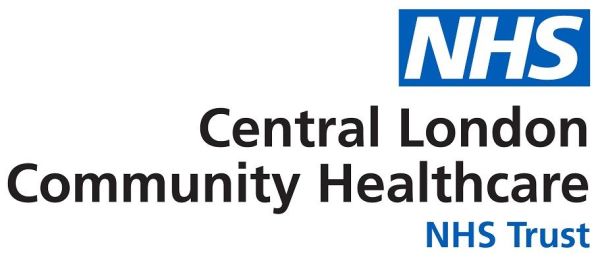Shoulder pain
Read more about this page below
Shoulder pain is the third most common musculoskeletal condition that is seen by physiotherapists. Shoulder pain can have a significant impact on one’s ability to perform their daily activities of living such as household tasks, work, hobbies, and caring for others.
The shoulder is a highly mobile joint within our body that is capable of high levels of mobility. This can contribute to the variety of problems that can occur in the shoulder.
There are three bones around the shoulder. They are the humerus which is the long bone of the upper arm. The scapula is also known as the shoulder blade and the clavicle which is also known as the collar bone.
Where the humerus meets the shoulder blade it forms a ball and socket joint known as the shoulder or glenohumeral joint.
The point at which the collar bone meets the shoulder blade at the top of the shoulder is known as the acromioclavicular joint.
You may find this video helpful in understanding the common causes of shoulder pain:
The most common problems we can see related to the shoulder are:
- Shoulder Arthritis
- Frozen shoulder
- Muscle & Tendon related shoulder pain
- The unstable shoulder
- Shoulder pain coming from your neck
Please click on the links for more information.
Shoulder Arthritis
Arthritis is the normal ageing process of the joints in the body.
Age related changes of these joints include changes such as wearing or thinning of the normal cartilage that lines the joint. There is a reduction in the normal lubrication of the joint as there is less synovial fluid present around the joint.
This can result in stiffening of the shoulder joint as it becomes less mobile as the joint and the soft tissues around it become tight.
For further information on managing this condition you can access these resources:
Frozen shoulder
Frozen shoulder is a condition characterised by shoulder pain and significant stiffness. It is associated with a lack of range of movement of the shoulder where you are unable to move your arm with or without assistance.
An x-ray of your shoulder will typically not demonstrate anything to be concerned about.
Frozen shoulder is usually self-limiting and often has three distinguishable phases:
- Pain-predominant phase: pain in your shoulder is the main feature and you may experience sleep disturbance.
- Stiffness-predominant phase: a restriction in the range of movement of your shoulder is the main feature although you may still be experiencing some pain.
- Resolution phase: the range of movement of your shoulder should begin to return and you should expect to experience minimal pain.
For further information on managing this condition you can access these resources:
- Frozen Shoulder Patient Information Booklet - CLCH
- Frozen shoulder - NHS
- Frozen Shoulder - ShoulderDoc
Muscle & Tendon related shoulder pain
This can involve the rotator cuff muscles which form a cuff around the ball and socket joint.
You can also have problems with the biceps muscle at the front of the arm that can lead to problems in the shoulder.
Muscle and tendon related pains of the shoulder can result from injury, overuse or a gradual build-up of strain. You can also develop age related changes in the tendons and muscles, as you grow older degeneration of the tendons can occur.
It is normal to develop age related tears of the rotator cuff muscles as you grow older or with overuse and often this is managed with physiotherapy.
For further information on managing this condition you can access these resources:
The unstable shoulder
The shoulder can be unstable as a result of history of previous dislocations or due to an injury.
The soft tissue structures surrounding the ball and socket joint such as cartilage, ligaments, tendons or muscles can become torn or loose through repeated injury and this makes the joint become more mobile and less stable. You may experience pain or a feeling of unsteadiness of the arm as you lift it upwards or away from your side.
For further information on managing this condition you can access these resources:
The nerves in your neck can sometime be responsible for the production of the pain in shoulder and arm. If you are experiencing pains below the elbow with your shoulder pain or having any altered sensations such as pins and needles, tingling or numbness this can also mean the nerves are contributing to your pain.
You may experience pain in the shoulder that can be produced by the nerves in your neck
For further information on managing this condition you can access these resources please visit our resources on neck pain.
Most shoulder problems improve with time, simple changes to lifestyle and suitable exercises.
Physiotherapy can be helpful to look at how your shoulder is moving and to provide appropriate exercises to help with strength and mobility.
The physiotherapist can guide you through on how to integrate the exercises into your normal routine, and provide you with strategies for returning to your normal activities.
They will look at your overall posture and the way you use the whole body when the arm moves.
Activity modification to avoid overexertion or overdoing can be helpful in managing your shoulder pain.
In some instances physiotherapy may irritate your symptoms particularly trying to move a stiff joint too far. Therefore you may ned to adapt your exercises to work within the movements particularly with arthritis.
If you are experiencing significant level of pain that is limiting your ability to work with your physiotherapist and normal pain medication is not helping, your physiotherapist may discuss with you the possibility of a corticosteroid injection for your pain.
They will talk you through the risks and benefits of it alongside any existing medical conditions that you may have to make sure that it is the most appropriate management option for you. The effects of the injections are known to last for a short period of time, and therefore often needs to be done in combination with physiotherapy to help you return to your daily activities of living with improved pain.
You can also try some heat and cold packs to manage your shoulder pain.
You may find these resources helpful
Sometimes you can develop shoulder pain that is related to a medical condition.
If you notice with your shoulder pain you experience any of the following, it is important to seek urgent medical review:
- You are unable to move your shoulder and also have a fever, with localised heat or redness of the arm.
- You experience difficulty with breathing, or tightness of the chest.
If the diagnosis of your shoulder pain is not clear from the clinical examination, your physiotherapist may refer you to a specialist consideration of investigations.
Most often scans pick up normal age related changes of the joint, muscles and tendons. As a result of this, how your shoulder pain will be managed is sometimes unlikely to be changed following the scan. Therefore if you have already had a scan completed it is helpful to talk through with your physiotherapist or GP the findings and to understand what is normal.
If you have symptoms in the shoulder that does not respond to an appropriate course of treatment, or you are having other symptoms related to your general health associated with your shoulder pain it may be appropriate to have further tests and your physiotherapist may refer you to a specialist or your GP for this.


